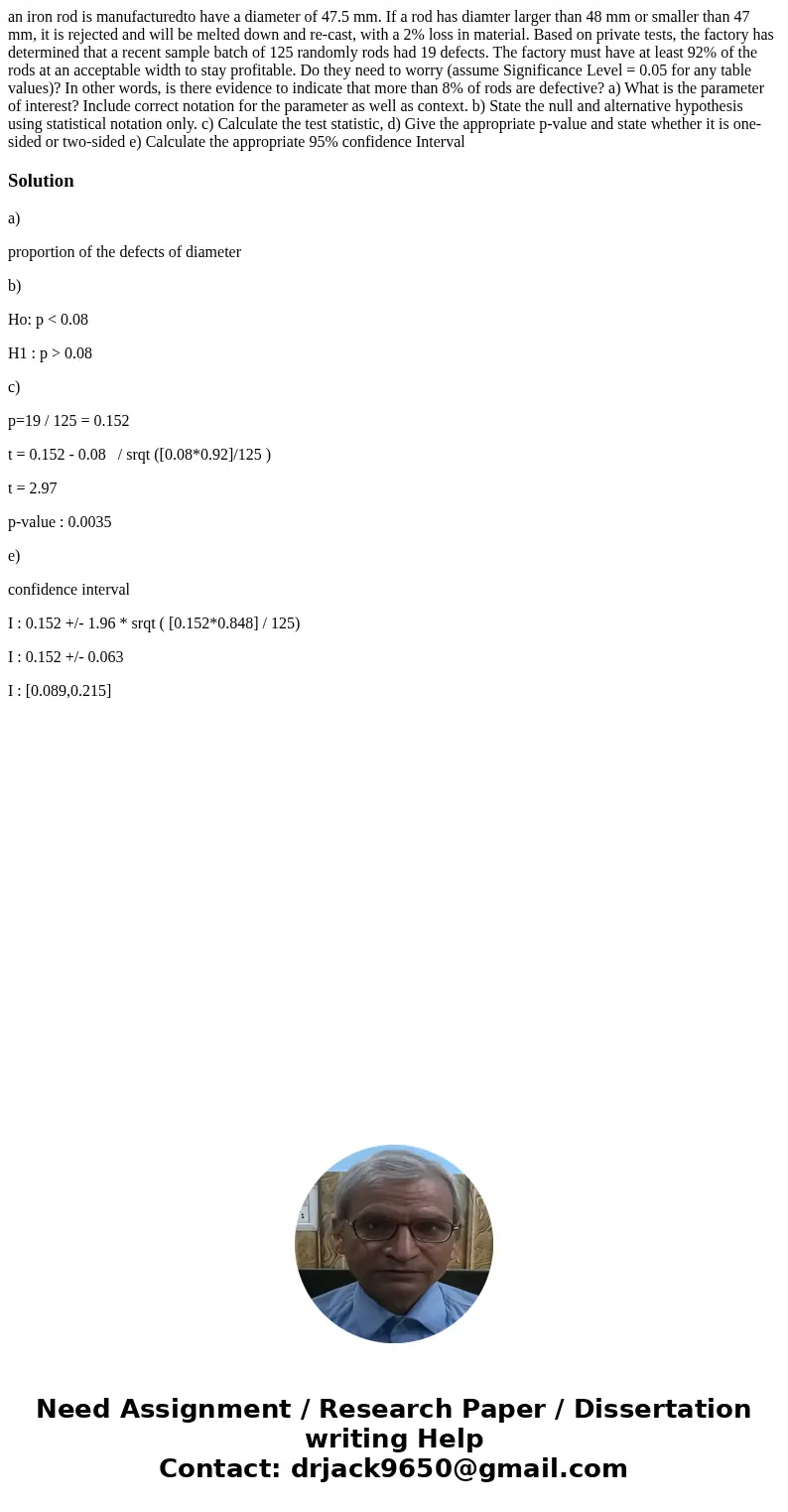an iron rod is manufacturedto have a diameter of 475 mm If a
an iron rod is manufacturedto have a diameter of 47.5 mm. If a rod has diamter larger than 48 mm or smaller than 47 mm, it is rejected and will be melted down and re-cast, with a 2% loss in material. Based on private tests, the factory has determined that a recent sample batch of 125 randomly rods had 19 defects. The factory must have at least 92% of the rods at an acceptable width to stay profitable. Do they need to worry (assume Significance Level = 0.05 for any table values)? In other words, is there evidence to indicate that more than 8% of rods are defective? a) What is the parameter of interest? Include correct notation for the parameter as well as context. b) State the null and alternative hypothesis using statistical notation only. c) Calculate the test statistic, d) Give the appropriate p-value and state whether it is one-sided or two-sided e) Calculate the appropriate 95% confidence Interval
Solution
a)
proportion of the defects of diameter
b)
Ho: p < 0.08
H1 : p > 0.08
c)
p=19 / 125 = 0.152
t = 0.152 - 0.08 / srqt ([0.08*0.92]/125 )
t = 2.97
p-value : 0.0035
e)
confidence interval
I : 0.152 +/- 1.96 * srqt ( [0.152*0.848] / 125)
I : 0.152 +/- 0.063
I : [0.089,0.215]

 Homework Sourse
Homework Sourse